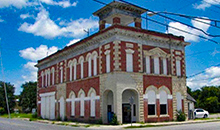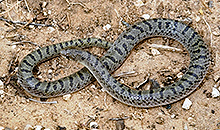Main Menu
Duval County Data
Duval County Communities & Places
Genealogy & History Links by USGHN
Important Duval County Addresses
Sponsors
Duval County Neighbors
Brooks County, Texas
Jim Hogg County, Texas
Jim Wells County, Texas
La Salle County, Texas
Live Oak County, Texas
McMullen County, Texas
Webb County, Texas
Other Websites
Welcome to Duval County Texas Genealogy & History Network!
Welcome to the Duval County, Texas Genealogy & History Network. Our purpose is to provide visitors with free resources for genealogical and historical research. To share your genealogy or history information, send an email to txghn@outlook.com and we will happily include it here. For other Texas Counties, visit the Texas Genealogy & History Network state website and go to the appropriate county. Thanks for visiting and good luck with your research! |
|
About Duval County, Texas...

Duval County is in south central Texas about fifty miles inland from the Gulf of Mexico and seventy-three miles north of the Rio Grande. The vegetation consists of small trees, shrubs, and cacti, with large areas of brush. Overgrazing led to the destruction of the watershed and clogged the springs that fed the county's streams, most of which are now intermittent, and, in combination with the suppression of grass fires, allowed mesquite to become dominant.
The Venado Indians, a Coahuiltecan hunting and gathering group, roamed the area in the 1700s. The seminomadic Coahuiltecans hunted bison, deer, javelinas, and smaller mammals, as well as snakes, lizards, terrapins, and other reptiles. They also gathered wild fruits, nuts, berries, seeds, roots, leaves, and prickly pear tunas. They were disrupted by the Apache and Comanche incursions from the north and by the Spanish pushing north from Mexico. European exploration of the area apparently began in the eighteenth century, as the road between Mier and Goliad passed through the area.
 The Marqués de Rubí reportedly crossed the area upon his return from the Spanish frontier in 1767. In 1812 Julián Flores and his son Ventura received the deeds to the San Diego de Arriba and San Diego de Abajo grants, totaling eighty leagues, from the Spanish government; herdsmen in their employ may have been the first European settlers in the county. In 1848 Ventura Flores sold some land on San Diego Creek to Pablo Pérez. The community Perez established there, called Perezville, was the precursor of San Diego. Also in 1848 Henry Lawrence Kinney and William Leslie Cazneau cut a road from Corpus Christi to Laredo that passed through San Diego.
The Marqués de Rubí reportedly crossed the area upon his return from the Spanish frontier in 1767. In 1812 Julián Flores and his son Ventura received the deeds to the San Diego de Arriba and San Diego de Abajo grants, totaling eighty leagues, from the Spanish government; herdsmen in their employ may have been the first European settlers in the county. In 1848 Ventura Flores sold some land on San Diego Creek to Pablo Pérez. The community Perez established there, called Perezville, was the precursor of San Diego. Also in 1848 Henry Lawrence Kinney and William Leslie Cazneau cut a road from Corpus Christi to Laredo that passed through San Diego.
In 1858 the Texas legislature formed Duval County, which originally embraced 1,887 square miles, from parts of Nueces, Live Oak, and Starr counties. County organization did not occur until eighteen years later. The county was named for Burr H. Duval, who fought in the Texas Revolution and was killed in the Goliad Massacre. In 1873 the outlaw Alberto Garza and some sixty followers made the county the center of their horse-stealing and cattle-skinning operations. They sent orders to the citizens of San Diego to bring enough money to buy the stolen hides or enough men to skin the hide-peelers. A party of Anglos  chose the latter option, attacked the outlaw's camp, and scattered the rustlers. Five years later, in mid-April 1878, a band of forty Lipan Apache, Seminole, and Kickapoo Indians, reportedly led by a blond white man, cut a swath through Webb and Duval counties, murdering and pillaging several ranches before dispersing. The perpetrators of the so-called "Great Raid of '78" were never caught.
chose the latter option, attacked the outlaw's camp, and scattered the rustlers. Five years later, in mid-April 1878, a band of forty Lipan Apache, Seminole, and Kickapoo Indians, reportedly led by a blond white man, cut a swath through Webb and Duval counties, murdering and pillaging several ranches before dispersing. The perpetrators of the so-called "Great Raid of '78" were never caught.
The county was finally organized in 1876, and San Diego was selected as the county seat. James O. Luby, the first county judge, dominated Duval County politics for most of the next three decades. Luby was part of an influx of whites who had come to Duval County after the Civil War and helped make it the sheep ranching capital of Texas. The county at the time was described as "one extended pasture" and "a great sheep walk." Between 1873 and 1883 Duval County reportedly had more sheep than any other county in the United States. But in the mid-1880s a mysterious plague began killing the sheep, and after Grover Cleveland was elected president in 1884 on a platform that included eliminating the tariff on foreign wool, the price of wool dropped from twenty-six cents a pound to seven cents a pound. The bottom fell out of the Duval County sheep.
 Duval County lost a portion of its land, including the town of Hebbronville, when Jim Hogg County was formed in 1913. Oil was discovered in the county in 1905, but not until a wildcat well came in near Freer in October 1928 did a full-scale oil boom occur. By 1938 Duval County ranked third among the state's 254 counties in oil production. The oil boom in Duval County did not last. From its peak of 20,289,399 barrels in 1938, production dropped steadily. In 1946 county wells produced only 14,188,268 barrels, fourteenth in the state, and in 1958 the county's 10,167,303 barrels ranked twenty-eighth in Texas. By 1988 Duval County ranked fifty-third in the state, with 3,061,639 barrels.
Duval County lost a portion of its land, including the town of Hebbronville, when Jim Hogg County was formed in 1913. Oil was discovered in the county in 1905, but not until a wildcat well came in near Freer in October 1928 did a full-scale oil boom occur. By 1938 Duval County ranked third among the state's 254 counties in oil production. The oil boom in Duval County did not last. From its peak of 20,289,399 barrels in 1938, production dropped steadily. In 1946 county wells produced only 14,188,268 barrels, fourteenth in the state, and in 1958 the county's 10,167,303 barrels ranked twenty-eighth in Texas. By 1988 Duval County ranked fifty-third in the state, with 3,061,639 barrels.
In 1982, 86 percent of Duval County's estimated population of 12,900 were of Hispanic origin, the eighth-highest percentage in the United States; 7 percent were of English descent, 5 percent of German descent, and 5 percent of Irish descent.
The county has a total area of 1,796 square miles, of which 1,793 square miles is land and 3 square miles  (0.1%) is water. The population recorded in the 1870 Federal Census was 1,083. The population peaked in 1940 at 20,565. The 2010 census recorded 11,782 residents in the county.
(0.1%) is water. The population recorded in the 1870 Federal Census was 1,083. The population peaked in 1940 at 20,565. The 2010 census recorded 11,782 residents in the county.
Neighboring counties are McMullen County (north), Live Oak County (northeast), Jim Wells County (east), Brooks County (southeast), Jim Hogg County (southwest), Webb County (west) and La Salle County (northwest). The county seat is San Diego. Other communities in the county include Benavides, Freer, Concepcion, Realitos, Ramirez, Rios, Sejita.
Duval County, Texas Records
Birth Records - The Texas Department of State Health Services has records from 1903 to present. Records for the last 75 years considered private and will only be provided to certain individuals. To obtain current information on who may obtain a record, how to submit a request and an official request form, see the Texas Department of State Health Services website or write to Texas Vital Records, Department of State Health Services, P.O. Box 12040, Austin, TX 78711-2040.
For older birth records you will have to write to the County Clerk of the applicable county. The existence of birth records prior to 1903 will vary widely from county to county. Local historical societies and genealogy collections in local libraries may be able to provide some information.
Death Records - The Texas Department of State Health Services has records from 1903 to present. Records for the last 25 years considered private and will only be provided to certain individuals. To obtain current information on who may obtain a record, how to submit a request and an official request form, see the Texas Department of State Health Services website or write to Texas Vital Records, Department of State Health Services, P.O. Box 12040, Austin, TX 78711-2040.
Marriage Records - The Texas Department of State Health Services can provide a verification letter of marriage for Texas marriages from 1966 to present. This is NOT a marriage license. To obtain a certified copy of a marriage license you must contact the County or District Clerk in the county or district where the marriage took place.
Local historical societies and genealogy collections in local libraries may be able to provide some information.
Divorce Records - The Texas Department of State Health Services can provide a verification letter of divorce for Texas divorces from 1968 to present. This is NOT a copy of the divorce decree. To obtain a certified copy of a copy of the divorce decree you must contact the County or District Clerk in the county or district where the divorce took place.
Local historical societies and genealogy collections in local libraries may be able to provide some information.




